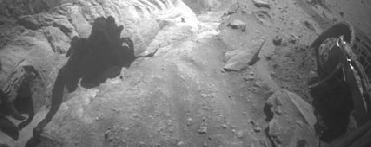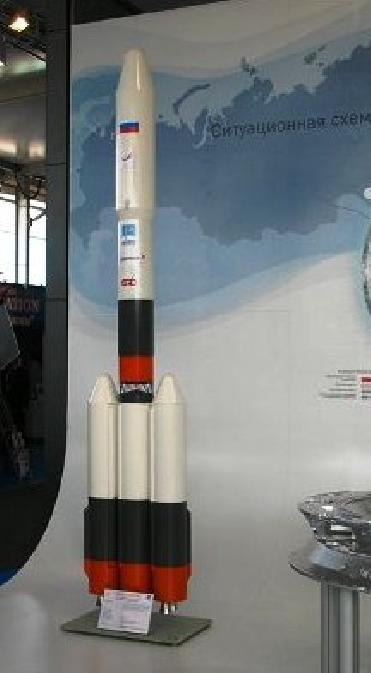
NASAís once-roving Mars Exploration Rover Spirit shows the position of Spiritís front wheels following a backward drive during the 2,154th Martian day, or sol, of the roverís mission on Mars (Jan. 23, 2010). NASA photo.
WASHINGTON (BNS): NASAís once-roving Mars Exploration Rover Spirit will now serve as a stationary science platform after several attempts to free it from a sand trap failed.
NASA says Spirit, which landed on the Red Planet just over six years ago, will now live out its remaining days as a static science station.
The robot's primary task in the next few weeks will be to position itself to combat the severe Martian winter. If Spirit survives, it will continue conducting significant new science from its final location. The rover's mission could continue for several months to years, a NASA statement said.
"Spirit is not dead; it has just entered another phase of its long life," said Doug McCuistion, director of the Mars Exploration Program at NASA Headquarters in Washington.
"We told the world last year that attempts to set the beloved robot free may not be successful. It looks like Spirit's current location on Mars will be its final resting place."
Spirit was driving south beside the western edge of a low plateau called Home Plate when its wheels broke through a crusty surface and churned into soft sand hidden underneath.
Even in a stationary state, Spirit continues scientific research.
"There's a class of science we can do only with a stationary vehicle that we had put off during the years of driving," said Steve Squyres, a researcher at Cornell University and principal investigator for Spirit and Opportunity.
"Degraded mobility does not mean the mission ends abruptly. Instead, it lets us transition to stationary science," he said.
One stationary experiment Spirit has begun studies tiny wobbles in the rotation of Mars to gain insight about the planet's core. This requires months of radio-tracking the motion of a point on the surface of Mars to calculate long-term motion with an accuracy of a few inches.
"If the final scientific feather in Spirit's cap is determining whether the core of Mars is liquid or solid, that would be wonderful -- it's so different from the other knowledge we've gained from Spirit," said Squyres.
Tools on Spirit's robotic arm can study variations in the composition of nearby soil, which has been affected by water. Stationary science also includes watching how wind moves soil particles and monitoring the Martian atmosphere.
Spirit and Opportunity landed on Mars in January 2004. They have been exploring for six years, far surpassing their original 90-day mission.
Opportunity currently is driving toward a large crater called Endeavor and continues to make scientific discoveries. It has driven approximately 12 miles and returned more than 133,000 images.
 Previous Article
Previous Article Next Article
Next Article












The Indian Air Force, in its flight trials evaluation report submitted before the Defence Ministry l..
view articleAn insight into the Medium Multi-Role Combat Aircraft competition...
view articleSky enthusiasts can now spot the International Space Station (ISS) commanded by Indian-American astr..
view article